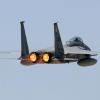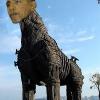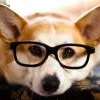Leaderboard
Popular Content
Showing content with the highest reputation since 11/14/2010 in Posts
-
Hello, my name is Max and I'm a senior in high school. Since everyone else is talking about the sports they play...I will too. My mother often asks me to stop playing tennis because it is such a physical sport, but I rarely listen to her so I continue to play at a varsity level. I can't have any pets except a boring fish because my dad is allergic to the fur on cats and dogs. At the moment I work at a restaurant called Hose 22 and I usually prepare food. I'm taking physics because it was recommended to me by my counselor. But I am excited to start physics because it looks like its going to be very different from all the other science classes. I also really want to learn more about the different forces that can act on objects.2 points
-
If you wanted to, you can change your name and remove your last name in the settings! Enjoy physics!!2 points
-
Thrilled to help, and welcome to the APlusPhtsics Community! The short version... The College Board says you need to know how to derive them. Very rarely have they asked students to do so, but it has happened... This guide sheet may help with studying: http://aplusphysics.com/courses/ap-c/tutorials/APC-Dynamics.pdf Good luck!2 points
-
Hi RegentsScholar06. All of the content is still on the site, just in different places (in the Worksheets sections as well as the Community section, which wasn't available when the first book was published), and all of the videos are still available on the site, just not in Flash format, but more modern streaming formats (and also through YouTube). Unfortunately I don't see as I'll have time to perform such a significant upgrade on the site in the near future to convert the manually-developed Flash content into HTML5, an extremely significant undertaking. All the Best, Dan1 point
-
Hello everybody! I'm Carolyn. I am glad to join you for the knowledge of the great science of physics! Carolyn time tracking software1 point
-
1 point
-
1 point
-
Hi Gio. APlusPhysics is just a single person, me, so that's pretty easy to answer. They are on my to-do list, but are at best a month or two away. Note that most of this material is covered to at least some depth in the "Honors" physics video series. Hope that helps! -Dan1 point
-
From - https://answers.yahoo.com/question/index?qid=20110917100043AAuhgCE1 point
-
It's basically the same test, though in recent years I have heard several statements that there is more of a focus on calculus-based questions (previously you could do reasonably well on the exam without solid calculus skills).1 point
-
When visible light, X rays, gamma rays, or other forms of electromagnetic radiation are shined on certain kinds of matter, electrons are ejected. That phenomenon is known as the photoelectric effect. The photoelectric effect was discovered by German physicist Heinrich Hertz(1857–1894) in 1887. You can imagine the effect as follows: Suppose that a metal plate is attached by two wires to a galvanometer. (A galvanometer is an instrument for measuring the flow of electric current.) If light of the correct color is shined on the metal plate, the galvanometer may register a current. That reading indicates that electrons have been ejected from the metal plate. Those electrons then flow through the external wires and the galvanometer, providing the observed reading. The photoelectric effect is important in history because it caused scientists to think about light and other forms of electromagnetic radiation in a different way. The peculiar thing about the photoelectric effect is the relationship between the intensity of the light shined on a piece of metal and the amount of electric current produced. To scientists, it seemed reasonable that you could make a stronger current flow if you shined a brighter light on the metal. More (or brighter) light should produce more electric current—or so everyone thought. But that isn't the case. For example, shining a very weak red light and a very strong red light on a piece of metal produces the same results. What does make a difference, though, is the color of the light used. One way that scientists express the color of light is by specifying its frequency. The frequency of light and other forms of electromagnetic radiation is the number of times per second that light (or radiation) waves pass a given point. What scientists discovered was that light of some frequencies can produce an electric current, while light of other frequencies cannot. Einstein's explanation. This strange observation was explained in 1905 by German-born American physicist Albert Einstein (1879–1955). Einstein hypothesized that light travels in the form of tiny packets of energy, now called photons. The amount of energy in each photon is equal to the frequency of light (ν) multiplied by a constant known as Planck's constant (â„), or νâ„. Einstein further suggested that electrons can be ejected from a material if they absorb exactly one photon of light, not a half photon, or a third photon, or some other fractional amount. Green light might not be effective in causing the photoelectric effect with some metals, Einstein said, because a photon of green light might not have exactly the right energy to eject an electron. But a photon of red light might have just the right amount of energy. Einstein's explanation of the photoelectric effect was very important because it provided scientists with an alternative method of describing light. For centuries, researchers had thought of light as a form of energy that travels in waves. And that explanation works for many phenomena. But it does not work for phenomena such as the photoelectric effect and certain other properties of light. Today, scientists have two different but complementary ways of describing light. In some cases, they say, it behaves like a wave. But in other cases, it behaves like a stream of particles—a stream of photons. Read more: http://www.aplusphysics.com/courses/honors/modern/duality.html http://www.scienceclarified.com/Oi-Ph/Photoelectric-Effect.html#ixzz3MLV49L00 http://www.physlink.com/Education/AskExperts/ae24.cfm http://www.colorado.edu/physics/2000/quantumzone/photoelectric.html1 point
-
Introduction: We decided to see if cars travelling North down Cooper Road outside of Irondequoit High School were speeding. We set up a timing station at twenty meters from the start to measure the speed of passing cars. Procedure: We chose a starting point on a line on the road, so timers could better see when cars started the measurable distance. When a car passed the starting point, timers at the station began their stopwatch. When the car passed the timer, they stopped their watch. Timers recorded the time it took for the car to travel the distance. Calculation: Conclusion: The average speed was 15.7 m/s, just .1m/s over the speed limit. Our conclusion is that cars travelling on Cooper Road do not often speed, perhaps due to the school zone. If we do this experiment again, there are a few things we can improve on. For one, we had some large distances in time span; this can be remedied by perhaps standardizing the timing system – should the timer start/stop when the front of the car passes through each point, the middle of the car, or the end?1 point
-
1 point
-
Well let's be a follower and blurt out the same information as everyone else... Here we go. My names Corey, I play football and wrestle. I plan on joining the air force and becoming either a pilot or any other cool job I find out about. I am probably the only person taking this class that thoroughly enjoys science. I'm that person who sits at home and watches through the wormhole with Morgan freeman and thinks about the world and how we've come to understand it. I am also taking so bio (why? Because I can...) and I think Mr. Fullerton is super hilarious (true, but hoping he'll read this and I can grab some extra credit or something) and yeah that's a little bit about me. I am taking physics because well I'll say it once again I actually like science a lot. And also I just like knowing more stuff. Knowledge is power (yeah that's a Mr. Tytler quote) and I hope to be able to actually understand the mathematics behind some of the theories that I have heard about that fascinate and boggle my mind.1 point
-
Hi my name's Kalea (kuh-lay-uh) and I am a senior here at IHS. In my spare time I love to run track and play field hockey. When i'm not in school i'm working, and when i'm not working i'm sleeping. When I'm not sleeping I'm usually buying something online or in person that I really don't need! I am looking forward to my senior year! I took physics because I generally enjoy sciences, and I didn't want to take environmental or AP Bio but I wanted to take a science. Which left this and AP Chem so with the toss of a coin this won! I hope to learn stuff about space and how gravity and other forces affect the human body. I'm hoping to come out the Regents feelings great! video of a skill needed to be successful on the field:1 point
-
My name is Megan, and I'm seventeen. I have two brothers, and a golden retriever. I go camping a lot by the lake, and I enjoy going kayaking and boating. Also, my job is that I landscape over the summer. The reason I took physics was because I heard that this was a very interesting class to take. I hope to learn more about how things work in the universe in depth. I think that this class will also help me figure out if I want this to be apart of my career. I feel that this class will be a very important part of my senior year.1 point
-
1 point
-
Hi Hannah -- welcome to APlusPhysics! Lots of volleyball players this year -- outstanding! Back in a former life (i.e. around the time you were born) I coached down in Texas. And a uke player too -- perhaps when we get to waves you might give us a demonstration?1 point
-
1 point
-
You're really good at guitar Peter! And I agree with your second paragraph, it really will help to view the world differently! Oh & the homework part too!1 point
-
I was looking for a science class as well. Like you said it was pretty cool to hear about what other people were doing in this class!1 point
-
1 point
-
Peter this was great. Absolutely stunning. I agree with your second paragraph.1 point
-
My name is Mark. I stumbled on this site while looking at things for the new AP Physics courses. This is my 34th year of teaching and I will have 3 sections of AP 2 and 3 sections of AP 1. I have taught AP B for many years. I am looking forward to having less content and more time for better understanding.1 point
-
Right, I would integrate from time t=0 to some final time t=t, so your limits of integration are 0 to t.1 point
-
Good Evening Folks, I've received quite a few requests over the past couple months, and especially the past couple days, asking if I knew of an "outline version" of the AP Physics 1 learning objectives, essential knowledge, etc., organized by topic. I already had this created from working on the AP Physics 1 Essentials book as a chapter outline/roadmap correlated to the new AP 1 course, but had never bothered to put it in a user-friendly format to share. Well, until yesterday. Here it is: http://aplusphysics.com/educators/AP1Outline.html/ I understand this may not be the order in which you'd teach the topics, but for me at least, this organization is much easier to wade through and make sense of than the current AP Physics 1 and 2 Framework document (in which I get easily lost in the 200+ pages). Perhaps it will be of use to you as well. Please note that you can drill down by clicking on the triangles to the left of the topics, it's quite a big document if you expand it all out. I'm planning on doing this for AP-2 as well, though I probably won't have a chance to start on it until late July. Make it a great day! Dan Fullerton1 point
-
Hi Sungy, The following may help you with putting all the pieces together... http://www.aplusphysics.com/courses/ap-c/videos/APCRotKin/RotKin.html http://www.aplusphysics.com/courses/ap-c/videos/MomentOfInertia/MomentOfInertia.html http://www.aplusphysics.com/courses/ap-c/videos/Torque/Torque.html http://www.aplusphysics.com/courses/ap-c/videos/APC-RotationalDynamics/RotDyn.html1 point
-
If you asked me that question as a fourth grader or even seventh grader I would have said a scientist. I was asking for microscopes for Christmas as age nine, and anatomy books at age 11. And I will admit to playing a few video games. Shockingly, I want to be an English major now. However, physics is the best subject known to man. Especially if you are blessed to be in Mr. Fullerton's class. Best teacher ever.1 point
-
I was just looking around on the usual places and I found something that some of your students might be interested in. It is using ultrasonic standing waves to levitate objects.1 point
-
Nice to have you on the team Mir, and I'm happy we have a class together! Hopefully we can help eachother to succeed in this class this year1 point
-
Hi I'm Reed and I go to west irondequoit high school. I will be going into my senior year and I super excited about the fact that I am senior class president for the second year in a row. I am also a dancer I have been dancing for 11 years, I am also the captain of the varsity swim team for the second year in a row. I also love to read books, listen to music, hang with my friends, and learning something new. In high school you are told to take three years of science and the fourth year is optional, you decide if you would like to continue on with science. I had originally planned not to go into a fourth year of science because I am not a science person and I do not do well, however my counselor convinced me otherwise. She told me that many colleges look if you have taken four years of science and they prefer that you continue with science as long as you can. I decided that she was right and I picked physics because i really want to shot a catapult and make bottle rockets. That to me makes science more fun and interesting.1 point
-
1 point
-
Hi Baillie! Wow, that is an excellent reason to take Physics!! This class might push you at times but don't forget that you have a wonderful support system of Mr. Fullerton, Miss Lawson and myself to help you along this crazy journey. Have a great start to the school year!1 point
-
Time travel was inconceivable for Newton and his studies. But in Einstein's universe it has become a possibility. Science fiction about time travel inspired some of today's scientific ideas on the subject. So dreaming about alternate universes is ok no matter what field you study. Time travel to the future is possible, and it has happened. Like FizziksGuy said, astronauts have aged slightly less than we whose feet have stayed on earth. Now whether time travel to the past is possible, that is still debated, given certain physical conditions. Also, the study of time travel can be used to discover whether the universe could have been created itself. Because of research on time travel, some scientist claim to have a prediction on the span of human existence. Considering how much time we have lived on earth, it is remarkable how much we know about the universe.1 point
-
Pre-Launch Design Release ****NOTICE: We ditched our old goal of making an unmanned orbit because a spacestation in orbit is cooler****** Team Name: Kailzah Available Funds: 37426 Vehicle Name: October Sky II Vehicle Parts List and Cost: Aerodynamic Nose (680x1), Ox. 4 Photo P. (300x2), Probodoyne OKTO2 (230x1), adv. SAS mod. (1,100x1), RCS Thruster (450x3), RCS Fuel Tank FL-R25 (800x1), Inline Clamp O Tron (700x1), TR-18A Stack Decoupler (600x3), FL-T400 Fuel Tank (850x1), FL-T800 Fuel Tank (1,600x1), liquid fuel engine (475x1), Rockomax Adapter (50x1), Rockomax Jumbo 64 Fuel Tank (12500x1), Mainsaid Liquid Engine (850x1) Design Goals: We used a rather large engine in combination with two connected smaller fuel tanks and three decouplers to ensure that October Sky II makes it into orbit. Launch Goal: With this launch, we hope to put a space station into orbit around Kirbin. We hope to learn how to make a proper orbit around Kerbin (this being our first official launch). Also, we hope to use this space station in the future with our further launches. Pilot Plan: 1. Turn on SAS and go full throttle 2.) During overheat, turn down throttle to 75% 3.) Decouple and loose the first fuel tank when fuel is low/out 4.) Go full throttle and enguage RCS 5.) Turn on propgade 6.) After exiting the atmosphere, cut engine 7.) Examine orbital position & approach apopolis 8.) full throttle & widen untill path is suitable for orbit Illustrations: Safety Rep:1 point
-
How can you be sure that you will reach Mun orbit? Are you going to circularize your Kerbin orbit first or burn straight for Mun? What Time would the most reasonable launch window be to meet your goals?1 point
-
For your first attempt at putting a satellite into orbit this is actually quite impressive. As for matters of efficiency, before I could see the pics I seen in your parts log that you were bringing a lot of fuel and you would no question be able to achieve your goal even if you halved your final stage. You did however do a fair job with what you used. Nice use of fuel lines to feed the central tank. You may find in future that if using wings that you don't need a gimble functioning engine or vice versa as either one on their own would allow you to turn easily saving weight, mass and reducing drag if you only used the engine. (Saves buying 4 wings too! ;-D ). Remember to check the isp of the engines too, for your initial booster stage there may be other engines that are highly efficient when within the atmosphere. (I'll let you check which.) Lastly remember terminal velocity. Overthrottling too early can cost you a lot of fuel for not a lot of gain.1 point
-
1 point
-
This is a really good trailer. Although I got into ksp before the trailer, It still really inspired me.1 point
-
First try finding the charge in coulombs, then convert coulombs to electrons. This mini-tutorial may help: http://www.aplusphysics.com/courses/honors/circuits/current.html So, if you use q=It, solve for q in coulombs. Then, convert q (in coulombs) to elementary charges, or electrons, using 1 electron = 1.6*10^-19 C. Does that help?1 point
-
Hello, hopefully I am posting in the right area. I apologize if not. I am studying the physics iBook "Physics - fundamentals and problem solving" , which is an absolutely amazing book by the way.. i had no idea one could teach through a book with a few videos and get the same results as a full on physics classroom. But anyway, there is a concept I am having trouble grasping. I understand that the force of the gravitational pull is mass times acceleration of gravity but what I'm having trouble with is what we are measuring when we stand on a scale. I was browsing the net and I got onto the Wikipedia site, http://en.wikipedia.org/wiki/Pound_(mass) , where it says that pounds are units of mass in the imperial system we use here in the US. It also goes on to talk about pound-force and pound-mass and that is where It gets me confused. When I step on a scale, is that scale measuring my mass? or my weight here on earth? Pound force would be weight (mass times gravity) and pound mass would just be mass I suspect?it might be a silly question to most, but I've never heard of this. and coincidentally, if one pound is .45359 kilograms, does that mean 1 pound-mass or pound-force equals .45359 kg? When they step on a scale with kilograms, is it measuring their weight or mass? In weight lifting, or on truck scales in kilograms, is that the mass or the weight? Thanks!1 point
-
This just in!!! A young physicist of only 17 years old has just calculated the acceleration due to gravity on planet earth. In Irondequoit high school in Rochester New York a group of mere students proved the age old physics fact. Blind faith couldn’t satiate their thirst for knowledge. Armed with a ball, tape measurer, and stop watch these physics fighters set out with a mission: find gravity’s acceleration. Excuse me, I’m receiving their procedure now……It looks as if they had one person start with the ball at a fixed point and then the same person let go of the ball and measured the time it took for the ball to go from the point to the floor. This was done with a stop watch. They repeated this procedure three times. Knowing that the initial velocity was 0 they then proceeded to calculate the acceleration due to gravity using the formula d= vit+ 1/2at^2. This came out to be 13.29 m/s^2. There was a bit of error in their calculation due to the equipment they possessed. They also calculated their percent error and found that it was 35.474 percent. This was most likely due to the variation in their three measurements. Regardless of the variation this was a great discovery in Mr. Fullerton’s class as well as a great confirmation in the world of physics -Jamie D1 point
-
Three amazing students at Irondequoit High School have made a break through in the study of physics: By only using a stopwatch, a measuring tape, and a ball, the acceleration due to gravity has been calculated in a new and scientific way. Students measured the height from the floor of the classroom to the top of the ceiling with a measuring tape, and got 2.75 Meters. Holding the ball at the top of the ceiling, the three students dropped the ball and started the stopwatch at the same time. They measured that the time the ball took to hit the bottom of the floor was .64 seconds. Also, the initial velocity of the ball was 0 m/s because any object dropped starts with an initial velocity of 0. Using this information, the students calculated for the acceleration to see if it really is 9.81 m/s2 . The Formula : d= viT+ (1/2)(a)(t^2) was taken to figure it out. with the information they had, the converted formula became: 2(2.75 m)/ (.64s)^2 = A . The answer obtained was 13.4m/s^2. Obviously it is not the real accepted value of 9.81, so they had to calculate percent error also. using the formula: (accepted value - actual value)/(accepted value) X100, the answer came out to be that there was a 36.6% error in their experiments. Faults in the experiment were being able to time the stop watch precisley, and measuring an accurate distance from where the ball was dropped , to the ground. Overall, the students at Irondequoit High School have created astounding breakthroughs in calculating acceleration due to gravity.1 point
-
So I finally watched the pilot episodes of the new Fox scifi drama "Terra Nova" (it airs Mondays at 8:00 p.m. ET). I found it watchable, with some potential, and like every other TV show in existence (except "Firefly") it had some things I liked and some I didn’t. I got email about it due [...] More...1 point
-
Here's a problem I encountered sometime in the first few weeks of mechanics last semester. Post an answer if you get one, or ideas if you have them. I can provide hints as necessary (diagrams, possibly useful tools, etc.) maybe starting later in the week. At this point I am considering turning these around on a weekly basis, and so I'll probably post a solution Monday, 12/6. If Mr. Fullerton wants to give extra credit for such things, I imagine one would want to have it done before then for extra points. And show all work! Whether by beautiful here or by mailing be the back of a napkin, documenting your thinking is imperative. Suppose a hockey puck sits atop a spherical, frictionless surface of radius R. The puck is then given a very small nudge, just so that it begins moving slightly (this nudge imparts a negligible amount of momentum onto the puck). Through what vertical distance does the puck descend before leaving the surface?1 point
-
If you weren't a super duper physics student, it would seem so! However, Forces cause accelerations on an object. and if an object is not accelerating in any direction, two things can be happening to the object. It can either be motionless OR in constant motion; talk to yourself about the definition of constant velocity, thats how I wrapped my brain around that one. Velocity only changes with acceleration (forces), so a constant velocity means no forces or forces that cancel each other out. I hope this helps!1 point
-
Hi Elliot, It does seem too easy! And I understand why you think the answer must be R, because I did too when I first read the problem. Unfortunately, it's not that easy. As the puck slides down the surface of the sphere, it accelerates both out and down. At some point, the out component of the puck's velocity becomes so great that gravity cannot keep it on the sphere. I encourage you to convince yourself of this by rolling a marble off a basketball or some other similar surface. (Rolling adds extra complexity to the problem, but the same principle applies.)1 point
-
well you know 3 could because if you put 3N and 4N at 90 degrees there resultant would be 5N, so if you put the 5N in the opposite direction of the resultant the object would not move. 2 could work too, because if you set it up so that the 3 2N forces were 120 degrees apart, a peice, you would be able to achieve an equilibrium (draw it!) Now that i think about it, the answer is 1. 1 could not have an obtainable equilibrium. When you put the other ones at funky angles you can always achieve an equilibrium. BUT, for number 1, even if you had the 5N force going one way, and the 1N and 3N force ON TOP of eachother heading in the exact opposite direction, you could not add up to the 5N needed to attain an equilibrium. Adding an angle between the forces only reduces the resultant (there is no sinx or cosx value bigger then 1). So to do this problem, the first step would be to see if 2 of the resultants can add up to be greater then or equal to the other resultant in all cases. For number 1, 1N + 3N < 5N, so it would be impossible to have an equilibrium1 point
-
I'm hoping this is the right place to post for Physics C Problems. I thought I heard that people were confused by the billiards web assign so I thought I'd weigh in. To me it seems like the velocities of the cue ball and the 8-ball have been switched on the webassign, but maybe I'm crazy. Also, I only know from experience that perfectly spherical billiard balls that collide perfectly tangentially ricochet off each other at complimentary angles, but the mathematical explanation in the answer packet leaves a bit to be explained for me. Any clarification would be much appreciated!1 point
-
I just did the ruler under the newspaper thing Mr. Fullerton showed us in class for my family and it worked! I was so proud of myself1 point
Terms of Use
The pages of APlusPhysics.com, Physics in Action podcasts, and other online media at this site are made available as a service to physics students, instructors, and others. Their use is encouraged and is free of charge. Teachers who wish to use materials either in a classroom demonstration format or as part of an interactive activity/lesson are granted permission (and encouraged) to do so. Linking to information on this site is allowed and encouraged, but content from APlusPhysics may not be made available elsewhere on the Internet without the author's written permission.
Copyright Notice
APlusPhysics.com, Silly Beagle Productions and Physics In Action materials are copyright protected and the author restricts their use to online usage through a live internet connection. Any downloading of files to other storage devices (hard drives, web servers, school servers, CDs, etc.) with the exception of Physics In Action podcast episodes is prohibited. The use of images, text and animations in other projects (including non-profit endeavors) is also prohibited. Requests for permission to use such material on other projects may be submitted in writing to info@aplusphysics.com. Licensing of the content of APlusPhysics.com for other uses may be considered in the future.















